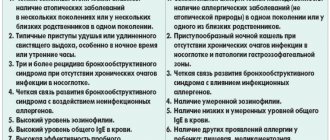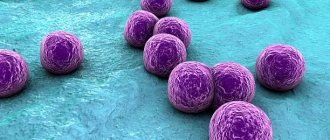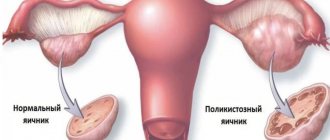Physiological coughing, which occurs involuntarily during the day, is considered a normal condition in which the body gets rid of excess mucus. Any other types of spastic exhalations must be regarded as a pathological process that requires proper diagnosis and treatment.
Types of cough
- A wet (productive) cough is accompanied by copious sputum production.
- Dry (unproductive) – the most exhausting and painful. If not treated correctly, it can lead to hoarseness or complete loss of voice.
- An acute cough appears suddenly and in most cases occurs with infectious diseases, as well as when a foreign object enters the respiratory tract.
- Protracted is a continuation of acute and is characterized by wave-like bursts, usually at a certain time of day.
- Chronic cough begins after a three-month protracted period and is a complication after an untreated illness.
- Paroxysmal, convulsive bronchospasm can be a manifestation of an allergy. A hysterical cough in a child is an alarming symptom, one of the first signs of whooping cough.
- “Barking” means inflammation in the larynx area. A dangerous symptom of false croup in children, which can lead to suffocation.
- Hoarse or silent means damage to the vocal cords;
- A wheezing cough indicates varying degrees of damage to the bronchi.
Based on the nature of the cough, its duration and accompanying symptoms, an experienced doctor determines the localization of the inflammatory process and makes the correct diagnosis.
General information
Cough is a protective mechanism of the respiratory system in response to irritants or sudden changes in the environment. Often, although not an independent pathology, a cough signals a disruption in the functioning of the body. In case of rare coughing attacks without fever in children, there is no need to worry: this is a one-time reaction to irritating particles (for example, dust), smoke or saliva entering the upper respiratory tract. It is normal to cough as a reaction to a sharp change in temperature when inhaling cold air. A cough lasting more than a week is a cause for concern. In the absence of fever and other alarming symptoms, a prolonged cough is always a sign of pathology. Often in children, a cough without fever indicates the development of an allergic reaction. A prolonged cough without fever requires diagnosis, observation and treatment by a specialist: pediatrician, otolaryngologist, allergist. Dangerous complications include bronchial asthma.
Wet cough in a child
Cough with sputum is characteristic of a number of serious diseases: from acute respiratory viral infections to pneumonia and tuberculosis. Foreign particles, toxins, and bacteria are removed from the respiratory tract with sputum. It is important to pay attention to the color and consistency of the mucus coming out:
- white thick is characteristic of ARVI;
- clear mucus is characteristic of bronchial asthma, allergic reactions, heart diseases;
- yellow mucus occurs during purulent processes;
- a rusty color indicates damage to small capillaries in the lungs, which is typical for pneumonia;
- a greenish tint indicates pneumonia, purulent bronchitis;
- brown color is characteristic of tuberculosis and lung tumors.
Of course, it is impossible to make a diagnosis based solely on the type of sputum. Competent consultation with a specialist (pediatrician, pulmonologist, otolaryngologist) and tests are always necessary.
Causes of children's cough without fever
A cough without fever indicates the initial stage of development of infectious and inflammatory processes of various etiologies. In other cases, such a cough acts as a secondary symptom of low-grade inflammatory processes. However, not every cough is a pathological symptom. The following are the main causes of non-fever cough in children:
- Formation of the upper respiratory tract. Babies do not swallow saliva, but cough it up due to the structure of the upper respiratory tract. Coughing in children under one year of age is normal if we are talking about a natural reaction to food debris accumulated in the mouth or mucus that has got onto the root of the tongue.
- Chemical or mechanical irritation of the mucous membrane by smoke, dust particles and aerosols. Coughing is a normal reaction to an external irritant.
- Foreign object stuck in the airway. By coughing, the child tries to expel the foreign object.
- Allergic reactions. Allergic cough in children often becomes protracted if the allergen is not identified and eliminated in time. A prolonged cough is fraught with the development of bronchitis and asthmatic pathologies.
- Bronchial asthma. It often develops in childhood as a continuation of an unattended allergic cough. In addition, there is a theory of the neurogenic etiology of bronchial asthma. Children's cough without fever is one of the main symptoms of this pathology.
- Chronic diseases. In children, chronic forms of pathologies such as pharyngitis, adenoids, bronchitis, tonsillitis and sinusitis, in the initial and latent phase, are manifested by a cough in the absence of temperature.
- Pathologies of the gastrointestinal tract. Coughing attacks without fever are a sign of dysfunction of the biliary tract and reflux gastritis.
- Helminthic infestations. Cough without fever in children occurs when infected with parasitic tapeworms.
- Illiterate or incomplete treatment. One of the reasons for cough without fever may be incomplete treatment of ARVI. In this case, the child generally feels well, but continues to cough. The attacks intensify upon returning from a walk in the fresh air, after playing sports and playing activities.
- Excessively dry indoor air. Too dry and warm air in the apartment, dust from toys, raised during the day during play and settled overnight, can irritate the child’s respiratory tract receptors and cause a cough.
- Taking medications, the side effects of which include cough without fever.
In rare cases, an intense cough without fever is one of the symptoms of serious pathologies in a child. Among them are lung cancer, tuberculosis, and cystic fibrosis. Sometimes a feverless cough in children indicates problems with the thyroid gland.
Cough medicines for children
How to treat cough in children
First of all, treatment is carried out to combat the causative agent of the disease and to alleviate the general condition of the child.
- If the cough is caused by a bacterial infection, then antibacterial drugs are prescribed.
- For a viral cause of the disease, antiviral drugs are prescribed, for a fungal infection of the lungs, antifungal drugs are prescribed.
- The allergic form of the disease requires the use of antihistamines.
- If sputum is poorly separated from the bronchi, then the prescription of mucolytic drugs is required.
- If your body temperature is elevated (above 38 degrees), you need to take antipyretics.
Cough preparations by group
What cough remedies should not be used by children?
In childhood, the cough reflex is not complete; it is formed by 5-6 years. It is important for both pediatricians and parents to remember that the use of drugs that suppress the cough reflex is contraindicated, especially in young children. It is also necessary to limit the use of expectorants, as they increase the volume of mucus secreted, which can lead to stagnation and further reinfection.
What can you give children for cough?
Mucolytics are the most promising for the treatment of diseases of the upper and lower respiratory tract. They are used for non-productive or productive cough with sputum that is difficult to separate. Today, the following mucoactive drugs are widely used in pediatric practice: bromhexine, ambroxol and acetylcysteine (ACC).
The main methods of using medicines in children are oral and inhalation. Depending on the disease, age and preference of the child, the choice of form is considered individually.
Types of disease
A child's cough without fever may vary in quality and duration. Depending on the presence or absence of exudate, non-temperature cough can be dry or wet. A dry cough is sometimes accompanied by wheezing and is more often seen with allergic reactions. A wet cough is characterized by the discharge of sputum; it appears with colds, bronchitis, and tuberculosis.
According to the nature of the attacks and their duration, children's cough without fever is divided into:
- paroxysmal cough: the child chokes and complains of severe spasms in the throat;
- rare and short-term cough: normal variant; occurs in response to the presence of a provoking factor immediately at the time of a coughing attack (difference in humidity, temperature, presence of an allergen, mold or dust in the immediate vicinity);
- a prolonged cough without fever does not go away for more than a month and indicates the presence of a strong inflammatory process in the body: asthma, whooping cough, tuberculosis, pleurisy (in the latter case, the cough will be dry);
- deep cough is a symptom of allergies, respiratory pathologies and tumor processes;
- a purulent cough indicates a severe bacterial infection.
A non-temperature cough with painful sensations in the throat before, during and after an attack indicates damage to the mucous membrane or the development of local infectious and inflammatory processes of the nasopharynx: sore throat, pharyngitis, laryngitis.
Dry cough in a child
A dry cough usually occurs against the background of a respiratory disease and is localized in the upper part of the respiratory tract. With this type of cough, no sputum is produced.
At the beginning of an acute respiratory infection (ARI), the cough is dry, debilitating, and the general condition of the body worsens. At this stage, complete cleansing of the respiratory tract does not occur, but after a few days, sputum gradually begins to be released from the bronchi.
However, this does not always happen. In some cases, a dry cough can last up to 3 weeks or more. The likely cause of this cough is inflammation . A reflex urge to cough leads to an intensification and spread of the inflammatory process of the throat or larynx.
A prolonged dry cough that lasts for weeks without any fever or weakness is most often a sign of an allergic reaction to animal hair, dust, or tobacco smoke.
Symptoms of a child's cough without fever
Involuntary physiological coughs during the day normally do not cause discomfort, as the body cleanses itself and reacts to environmental irritants. Spastic types of attacks of a different nature should be regarded as a sign of a pathological process. You should be wary if one or more of the following signs are present:
- copious sputum production with a wet cough;
- painful sensations in the throat with an exhausting dry cough, especially if hoarseness and hoarseness occur after an attack;
- sensation of a foreign body in the respiratory system;
- attacks of suffocation during coughing;
- wave-like repeated bursts of coughing throughout the day;
- regular coughing attacks for more than 3 months in a row (the process of cough chronicization);
- convulsive bronchospasms, causing a prolonged coughing attack (often occurs with allergies and bronchial asthma);
- the child's inability to cough completely;
- hysterical cough up to an attack of vomiting (a symptom of whooping cough);
- “barking” cough (a symptom of croup);
- hoarse and silent cough (vocal cord damage);
- wheezing cough (damage to the bronchi).
A child's cough without fever is more severe than a similar condition in an adult. Finding out its causes should not be delayed.
Cough and fever
An increase in temperature when coughing indicates a reaction of the immune system to the occurrence of an inflammatory process in the body.
Dry cough with fever
The most common causes of a dry cough with an elevated temperature in the range of 37–37.5 0C are infectious and inflammatory diseases in the initial stage.
- Flu, ARVI . In the first days of the disease, the cough is irritating, painful, and dry.
- Laryngitis . With the development of inflammation of the larynx, the cough is convulsive, barking, and there is a feeling of obstruction in the throat when swallowing.
- Pharyngitis . Noticeable redness of the back of the throat with persistent cough and rapid rise in temperature.
- Dry pleurisy . Chest pain worsens with sharp inspiration or coughing.
- Pneumonia of atypical form . Inflammation of the lungs is accompanied by a dry cough, chills, the condition worsens sharply, and shortness of breath may occur.
- Whooping cough . Most often children of the first year of life and school age become ill. A paroxysmal cough at the beginning is unproductive; as the disease progresses, the attacks intensify and end with vomiting or spitting out thick, viscous sputum, followed by a characteristic wheezing inhalation.
- Bronchial asthma . Choking and loud wheezing may occur. Clearing the throat, inhaling and especially exhaling is difficult.
- Worm infestation . The appearance of a cough is associated with the entry of helminth larvae into the lungs. Breathing becomes whistling and audible at a distance.
Wet cough with fever
Typically, a cough becomes productive in the later stages of the same acute respiratory infections: viral and bacterial. It is often accompanied by fever - a high temperature of up to 38 0C. Cases requiring special attention:
- Bronchitis . May develop as a complication of acute respiratory infections. High temperature and cough with sputum indicate an active inflammatory process in the bronchi.
- Pneumonia is typical . A wet cough appears due to the proliferation of microorganisms, which provoke copious mucus secretion in the bronchi.
- Lung abscess . It is characterized by the formation of a hollow area in the lung tissue that is filled with pus. When the cavity ruptures, purulent sputum comes out, it has an unpleasant odor, and may contain blood impurities.
- Tuberculosis . The temperature is kept up to 38 and rarely up to 39 degrees. The cough is severe and blood may be released. The sputum of a patient with tuberculosis contains mycobacteria and is infectious to others.
Cough without fever
The most common causes of cough at normal temperature in a child are:
- The onset of viral and bacterial infections while the immune response has not yet developed and the temperature has not risen.
- Allergic reaction to plant pollen, dust, mold, animal hair, etc.
- A reflex reaction to dust, smoke, and aerosols entering the bronchial mucosa.
- Entry of a foreign body into the respiratory tract.
- Diseases of the nasopharynx, impaired flow of mucus from the nose.
- After illnesses as a residual phenomenon.
Diagnosis of pathology
A pediatrician can perform the initial diagnosis upon treatment. A narrow specialist, an otolaryngologist, is responsible for making an accurate diagnosis and choosing a treatment regimen. An important role in establishing the cause of cough without fever in a child is taken by collecting an anamnesis. It is the responsibility of the attendant to detail the following observations:
- how long and intense the coughing attacks are;
- character of cough: dry, wet, “barking”, “whistling”;
- what becomes a catalyst for coughing: active games and sports, cold air, eating;
- Are there any third-party symptoms accompanying the cough: runny nose, vomiting, snoring;
- is there a correlation between coughing attacks and the time of day;
- whether the child’s emotional state affects the nature and frequency of coughing.
In addition to the conversation, the otolaryngologist will examine the child during the appointment and carry out a number of manipulations and prescriptions, including:
- auscultation, incl. using a phonendoscope;
- radiographic examination and CT;
- examination of bronchial discharge;
- fibrobronchoscopy examination;
- video endoscopic examination of ENT organs.
The nature and duration of the cough, coupled with the accompanying symptoms, allows us to determine the location of the inflammation and make a diagnosis more quickly. During the diagnosis, additional consultation with a pediatric allergist, phthisiatrician, endocrinologist, infectious disease specialist, or immunologist is possible.
Methods for diagnosing chronic bronchitis in children
The clinical picture of CKD may be similar to asthma. But, unlike asthma, chronic asthma usually does not respond to bronchodilators. When auscultating the lungs, wheezing is most often heard due to increased secretion of mucus into the lumen of the bronchi (wheezing when exhaling). However, asthma and CKD can occur simultaneously. If a child with a wet cough and known asthma does not respond to asthma medications, treatment for asthma should be given. Symptoms of CKD may also be similar to cases of foreign bodies entering the respiratory tract. If the cough begins suddenly after the child has choked, while eating or during physical activity, the child should be checked for foreign body inhalation.
Treatment of children's cough without fever
If you suspect a pathological nature of a child’s cough, you should contact a pediatrician or otolaryngologist. Timely treatment will allow for competent cough therapy and avoid complications.
The therapeutic regimen is based on an integrated approach: some of the measures are aimed at relieving coughing, and some are aimed at eliminating its root cause.
Drug therapy includes several groups of drugs:
- antitussives (weakening the cough reflex);
- mucolytic;
- antiallergic;
- antimycotics;
- antibiotics;
- antiviral.
Additionally, a course of inhalations with medicinal solutions (via a nebulizer) may be prescribed. General recommendations include sufficient indoor air humidity, quiet walks, and drinking regime (warm drinks).
Since cough most often acts as a symptom of the underlying pathology, the success of getting rid of it depends on the success of treating the disease that became the root cause. The treatment plan is prescribed by a specialist.
Forecast
With timely seeking help and competent therapy, the prognosis is favorable. In the case of a prolonged course of children's non-temperature cough (more than 3 weeks), complications may develop or chronicity of pathological processes in the upper respiratory tract. In children, a prolonged cough is more severe than in adults, since the child’s mucous membrane is less adapted to irritants. Lack of treatment can lead to the development of dangerous conditions such as bronchial asthma, bronchitis and pneumonia.
How to determine the cause of a child's cough
If the cough is not associated with diseases of the respiratory system, other symptoms additionally appear. For example, stomach pain, heart pain, headache. In this case, you will need to consult a neurologist, gastroenterologist, or cardiologist. Only a doctor can determine why a child has a cough. You should not self-medicate and use medications or use dubious methods of alternative medicine.
To determine the cause of the cough, you need to consult a doctor in time. A timely visit to a specialist will determine how correctly the diagnosis is made, as well as how correct and timely the therapy is. The doctor will be able to prescribe rehabilitation courses in a timely manner - physiotherapy, massage, halotherapy. It is also necessary to undergo preventive procedures in order to reduce the risk of re-development of the pathological process.
Prevention
The main prevention of children's cough without fever is to follow general recommendations for maintaining the health of the child's respiratory tract. You can add the following:
- Teach your child to use nasal breathing while walking in the fresh air;
- if the mucous membrane of the throat is irritated, let the child drink a lot of warm liquid;
- maintain a sufficient level of humidity in the apartment, especially in the nursery, where the child spends a significant part of the day;
- at the first sign of cough as a symptom, convince the child to maintain a vocal regime: try not to scream and talk as little as possible;
- Make sure your child's hands, feet and head are always warm.
What to do if your child has a persistent cough
If a lingering dry or wet cough is observed in a child during treatment of the respiratory system after a respiratory illness, it is important to follow certain recommendations in order to successfully cure it.
- Walk with your child more often, preferring leisurely walks in the park or forest and avoiding too active games.
- Give your baby plenty of liquid at medium temperature. If he doesn’t like water, then offer juices, compotes, jelly, tea with honey and lemon, milk with honey and other well-known folk remedies instead.
- Make sure that when treating a child’s wet, lingering cough, the air in the apartment is not dry: you need to do wet cleaning more often and (or) turn on a humidifier.
- Take long baths in a warm bath - this helps in the fight against both dry and wet (or as it is also called “wet”) cough.
- Find an effective cough syrup that you can take throughout your recovery process.
Since all chemical remedies for persistent coughs in children, including antibiotics, cannot be taken for longer than 10 days due to the risk of side effects, you can use herbal syrups. These include Doctor MOM® cough syrup, which contains 10 medicinal herbs and does not contain alcohol. It is suitable for children from 3 years old. Doctor MOM® cough syrup can be taken for up to three weeks in a row, and, importantly, children really like its pleasant taste, so you don’t have to run after them around the apartment with a spoon in your hand. Doctor MOM® cough syrup has a complex effect: mucolytic , bronchodilator, expectorant and anti-inflammatory.
Questions and answers
— Which specialist treats a child’s non-fever cough?
— The initial appointment can be carried out by a pediatrician. An otolaryngologist is responsible for making an accurate diagnosis, choosing diagnostic procedures and prescribing a therapeutic treatment plan. Depending on the cause of a child’s cough without fever, consultation with a specialist in a related field may be necessary.
— What is the normal duration of a child’s cough without fever?
— For children over one year old, we can normally talk about rare coughing attacks as an adequate physiological protective reaction to an environmental irritant. The second case, when there is no reason for concern, is a cough without fever and runny nose lasting no more than two weeks after a recent ENT disease, for example, ARVI or bronchitis. This is how the child’s body tries to get rid of secretory residues in the bronchi.
— What household factors can trigger the development of a child’s cough without fever?
— The most common cause of dry, non-temperature cough in children is household allergies. The role of antigens can be various types of dust, skin particles or animal hair, mold, fungi, microparticles of detergents, pillow feathers, waste products of saprophytic mites. Relief of the child’s condition occurs only after the allergen is identified and eliminated. Other provocateurs of children's cough without fever are chemical household products (including aerosols), smoke, and sources of strong odors (for example, perfume).
How to treat a persistent cough
If left untreated, it can develop into bronchitis or pneumonia, so you need to be careful and choose your medications wisely. You should not self-medicate or use antibiotics without a doctor’s prescription for a prolonged cough in a child - they may not only not help, but also have a negative effect on the microflora of the gastrointestinal tract (gastrointestinal tract). However, one should not rush to the other extreme - to use folk remedies to treat a persistent cough in children: heating, inhalation over hot potatoes, herbal decoctions and gargling. You need to see a doctor to get an adequate treatment regimen. Also, if necessary, you can use herbal preparations. However, before you start treating cough, you need to find out its cause.
Sources
The following materials were used to create this article:
- G. A. Samsygina. Cough in children. Clinical manual - 2nd ed., revised. and additional - Moscow: GEOTAR-Media, 2021. - 192 p.: ill. — (Series “Library of a Medical Specialist”).
- Glukhov S.A. Artificial cough // Great Medical Encyclopedia: in 30 volumes / ch. ed. B.V. Petrovsky. — 3rd ed. - M.: Soviet Encyclopedia, 1979. - T. 10: Kabakov - Coalescence. — 528 p.: ill.
- I. G. Bereznyakov. Mechanisms of cough // News of medicine and pharmacy, December 2005, No. 20-22 (180-182).
- Nikitin V. A., Marks S. I., Tolstykh E. M., Vasilyeva L. V. Clinical variants of the cough reflex and their correction / Voronezh State Medical University named after N. N. Burdenko. // M.: Russian Respiratory Society (RRO), 2021. Scientific and practical journal “Pulmonology”, No. 26 (2).









